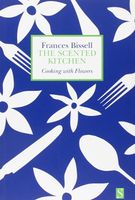Advertisement
Nasturtiums
Published 2012

‘The seeds of this rare and faire plant came from the Indies into Spaine, and thence into France and Flanders, from whence I received seed that bore with me both floures & seed, especially those I received from my loving friend
John Robin of Paris.’
John Gerard Historie of Plants, 1633
Nasturtium, or Tropaeolum majus was brought to Spain in the sixteenth century by the conquistadores, who had seen the Amerindians using it to treat respiratory ailments and as an antibacterial. English herbals of the time refer to the plant as Indian cress. Nasturtium means ‘nose-twister’ in Latin, a reference, perhaps, to the expression on one’s face after eating a particularly peppery specimen. And quite strong flavours do indeed develop in the flower, the leaves and the seeds, especially under a hot sun. Indeed, in times of shortage the dried and ground seeds have been used as a pepper substitute.

